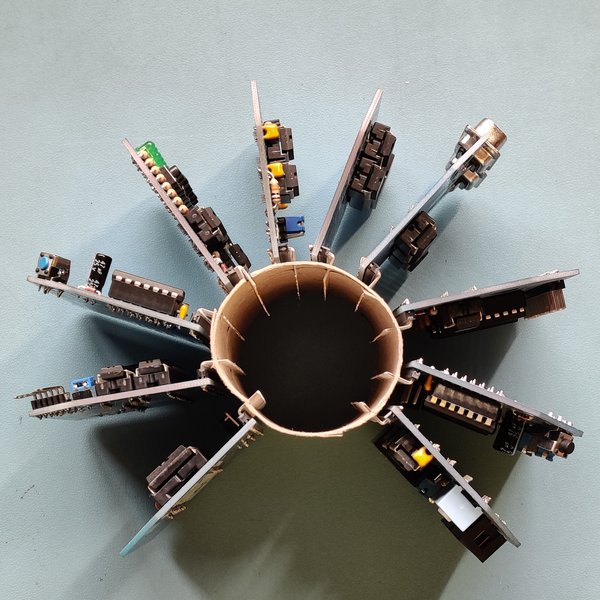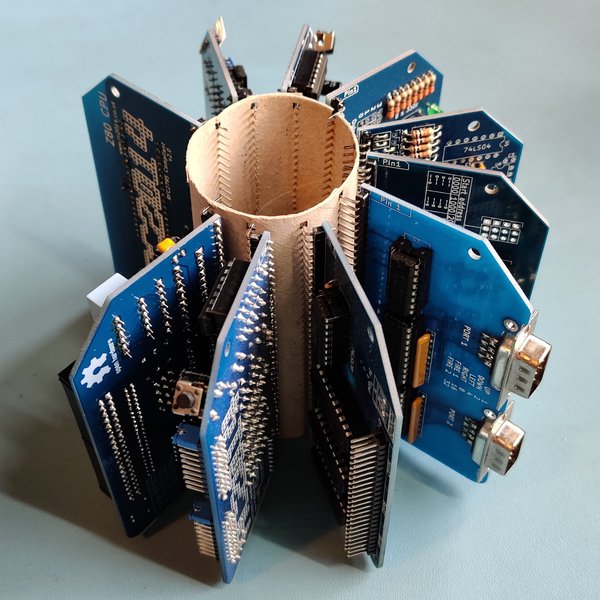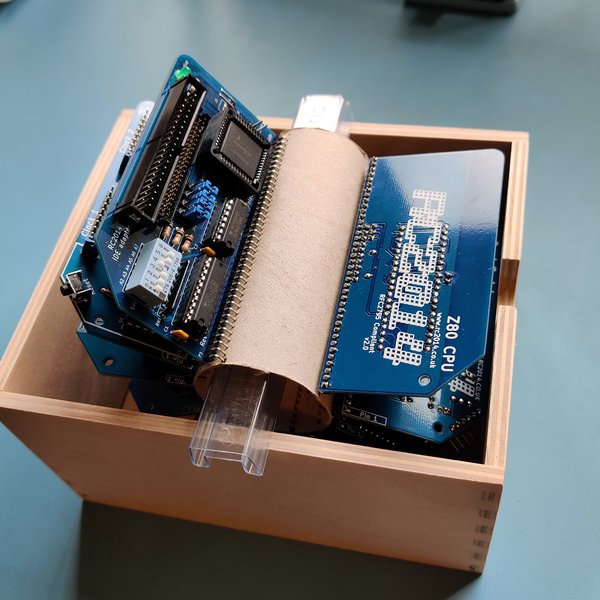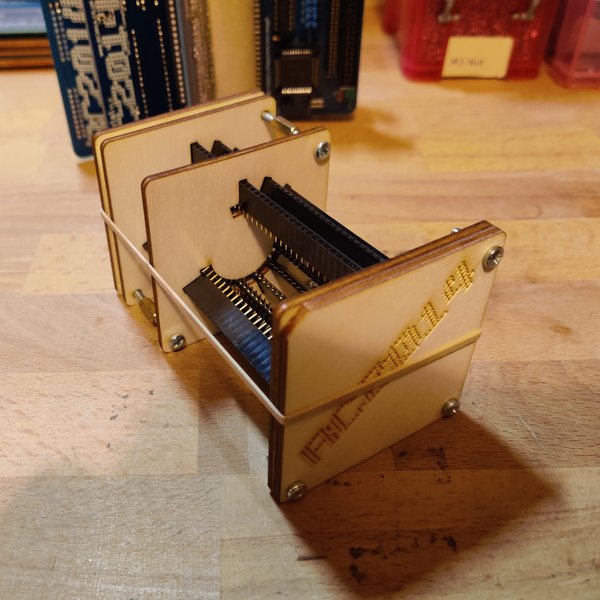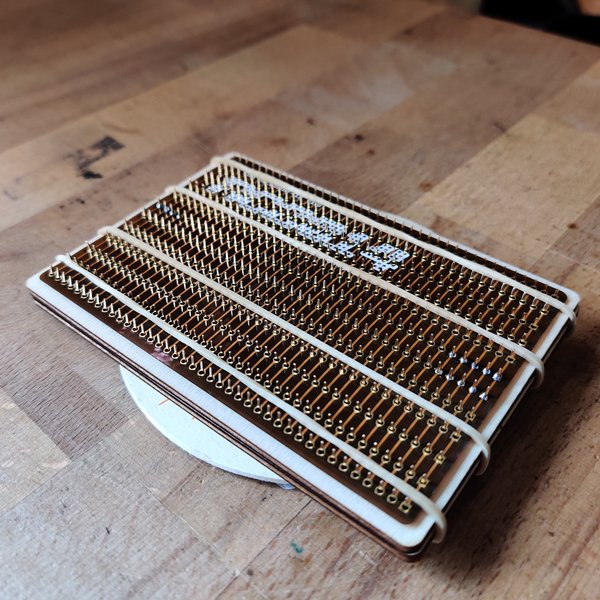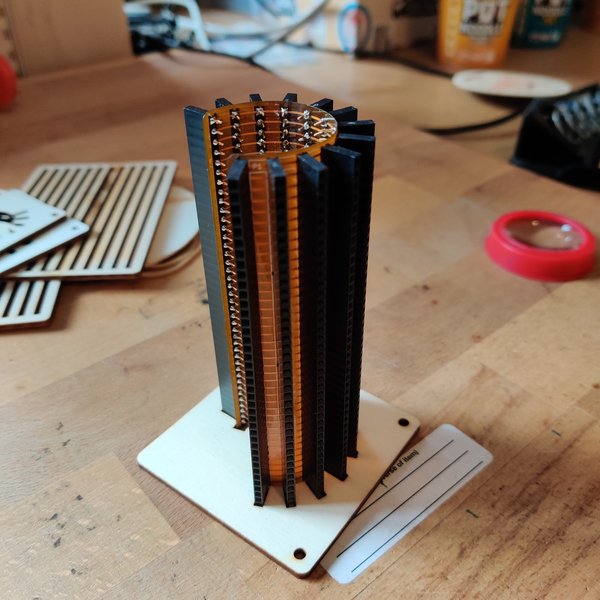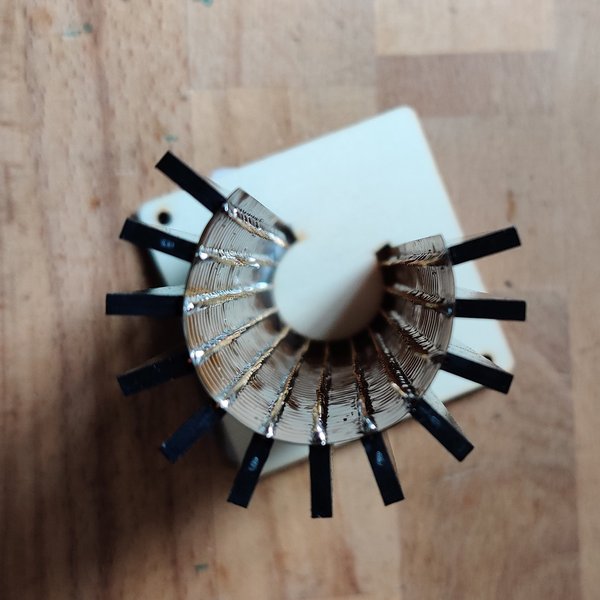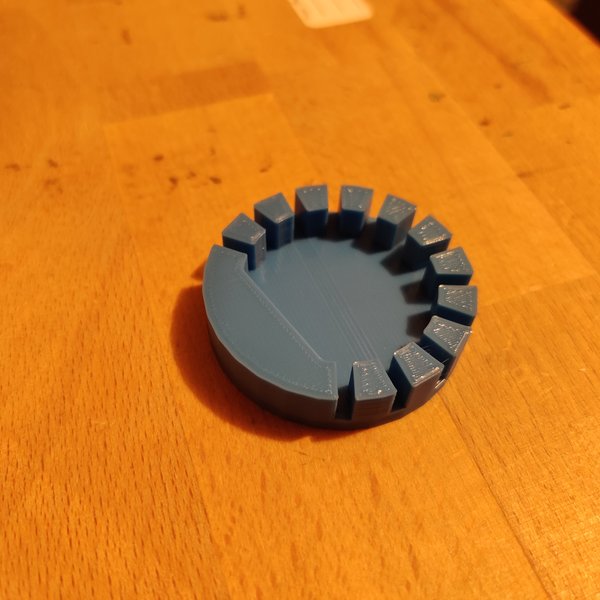
Ever wished that you had a Cray 1 Supercomputer? Ever wondered if an RC2014 backplane could wrap around a cylinder? Ever thought about how many retweets a Z80 drawing a Mandelbrot fractal could get? Ever had an idea that’s so daft, the only way to exorcise it is to do it? If so, would you like to Seymore…

Like most ideas in Lockdown, things started with a throwaway comment on Twitter and quickly escalated to laser cutting a toilet roll. I blame Shirley Knott
So, as a practical joke, the homage to the powerful Cray 1, and also the less powerful Rolodex worked surprisingly well. This inevitably lead to the question of making it work for real
Taking some measurements from the toilet roll, I laser cut a simple jig to hold 12 40 pin sockets around 270 degrees, with the intention of soldering wire from pin to pin in situ. This quickly demonstrated that it just wasn’t practical to get the soldering iron in such a tight area.
Another jig was made to hold the sockets at an even distance, and use brass wire to connect them up, with the intention of bending them around afterwards. This also became quickly apparent that it wasn’t going to work.

Luckily OSHPark offer a flex PCB option. I’ve been aware of this for a while, and wanted to try it, but there hadn’t been anything suitable within the RC2014 ecosystem. (Well, there have been requests for a Floppy Module, but I don’t think anybody actually wants a module which is floppy!). At $10 per square inch, it isn’t cheap, but, after a bit of KiCad work, the smallest 12 slot RC2014 backplane was ordered.
Soldering through hole components on to flex PCB is not easy, and 480 solder joints generate a lot of heat which will warp the plastic if it is not done carefully in a controlled manner. The Flex PCB was designed to fit the existing jigs, and when soldered up, it fitted perfectly!
Using the jig dimensions, I was able to 3D print a couple of end caps which held the slots in place and made things much more solid. I filled it with a bunch of spare modules and tested out if the backplane itself worked…
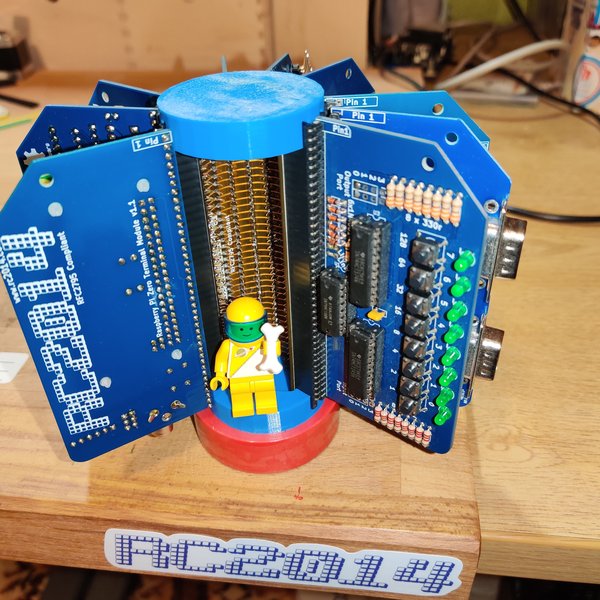
Huston we have a problem! Nothing came up when I plugged in a FTDI cable :-(
A few hours were wasted going down different rabbit holes chasing too many red herrings. The modules I’d put together essentially made up a RC2014 Zed, and were picked from some of my non-current module archive. What I’d forgotten about is that old versions of RomWBW which are built for use with a DS1302 RTC Module will hang for about 2 minutes on startup if the RTC cannot be found. So, in fact, it was all working perfectly, I just had to wait a little while after plugging in!
A quick upgrade to RomWBW v3.0.1 overcomes this problem, and should have been done right at the start!
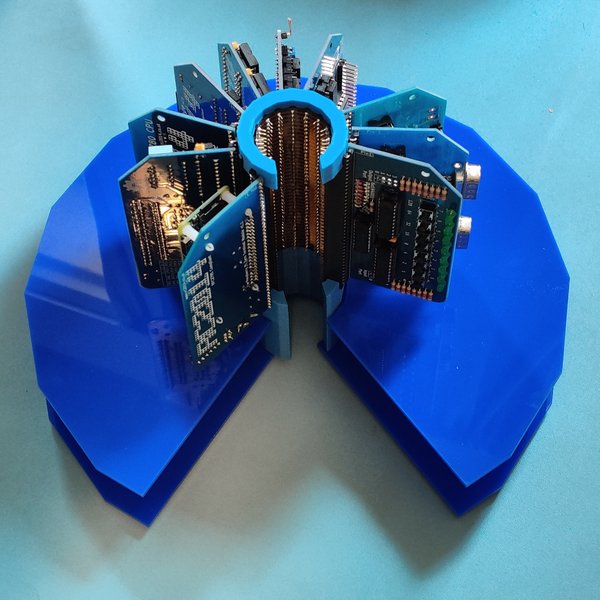
To make things more Cray-like, I redesigned the end caps to be open at the top and bottom, and extended the lower one to support a laser cut skirt. One day this will house an IDE hard drive, but for now, it’s just there to mimic the bench seat on the Cray 1
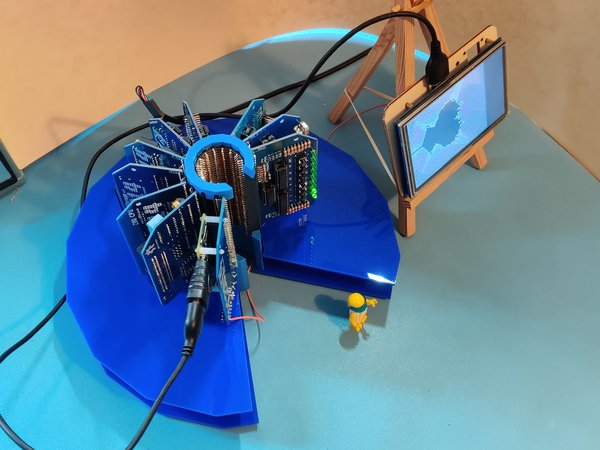
The irony is not lost on me that the Pi Zero, which is only used to generate HDMI from serial data, is several orders of magnitude more powerful than the Cray 1, which is, itself, way more powerful than the Z80 which is calling all the shots!
There are no plans to release this as a product at this stage. The price would be too high to justify for a kit which really is not very practical at all.

